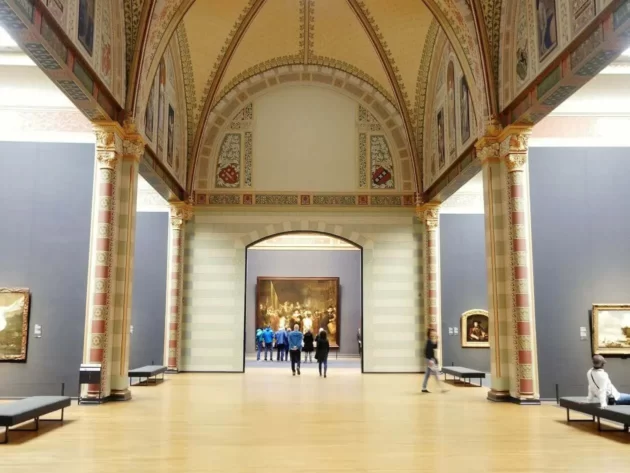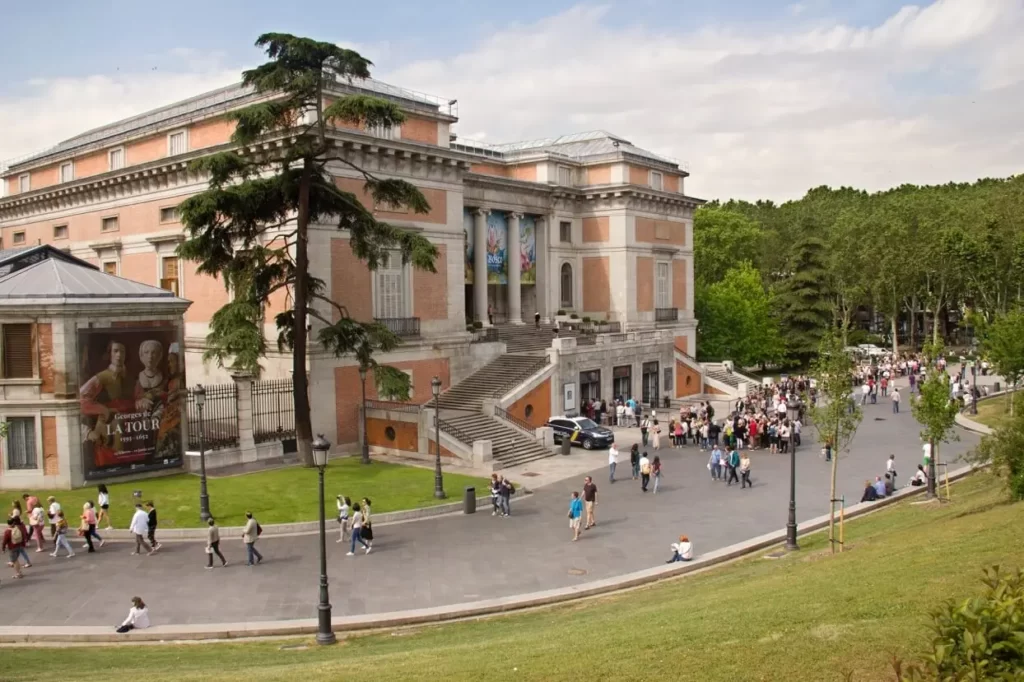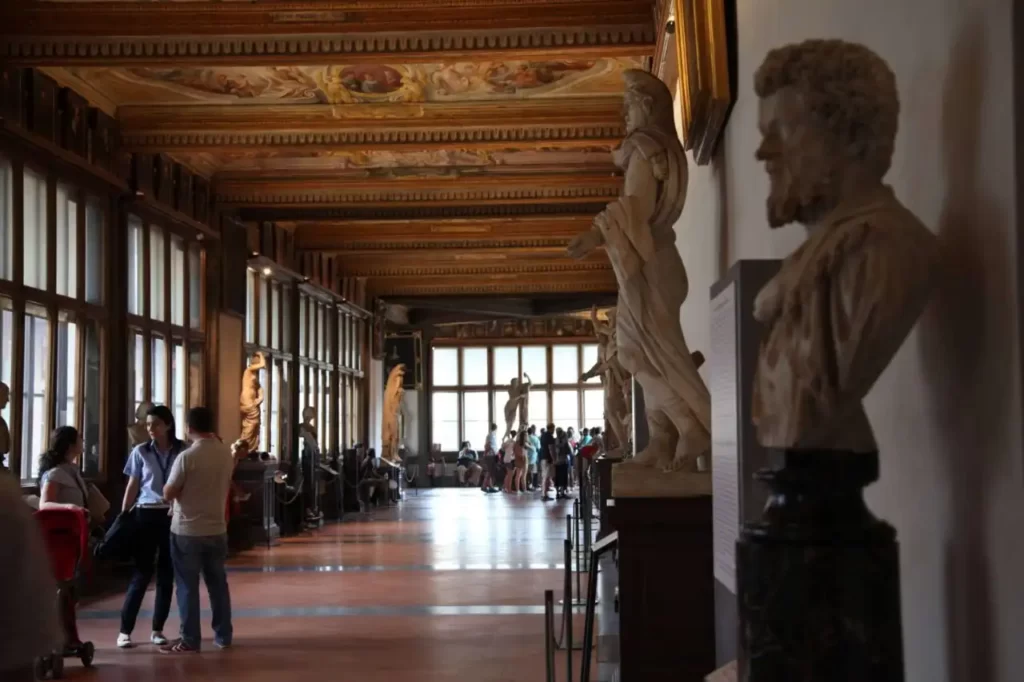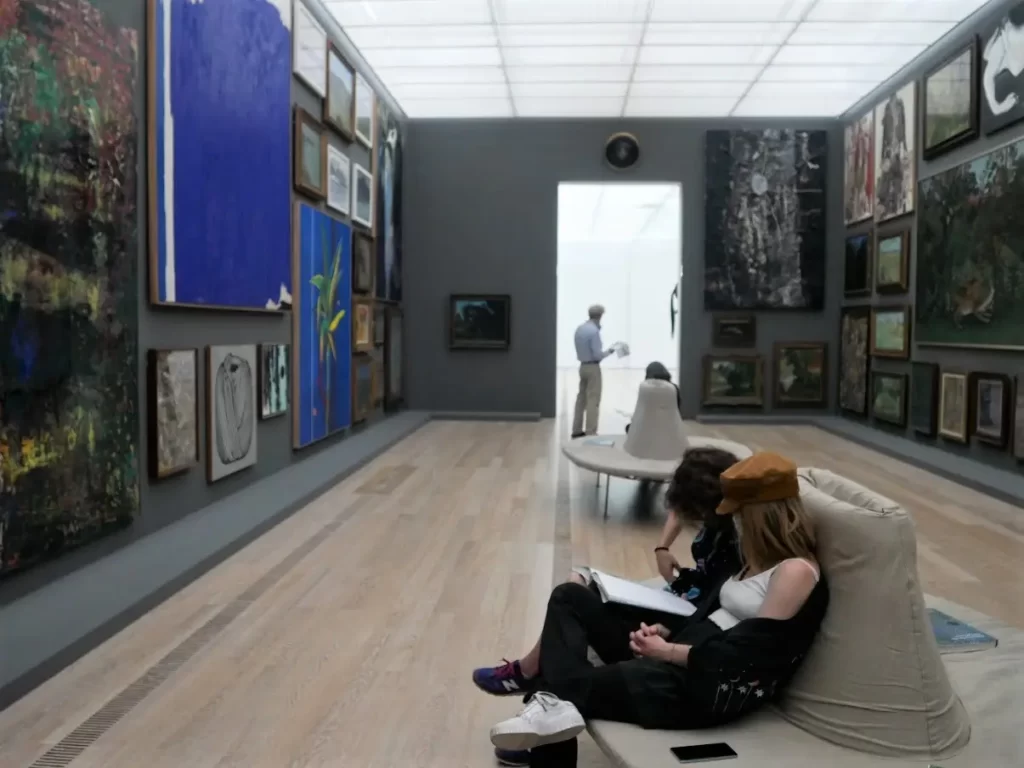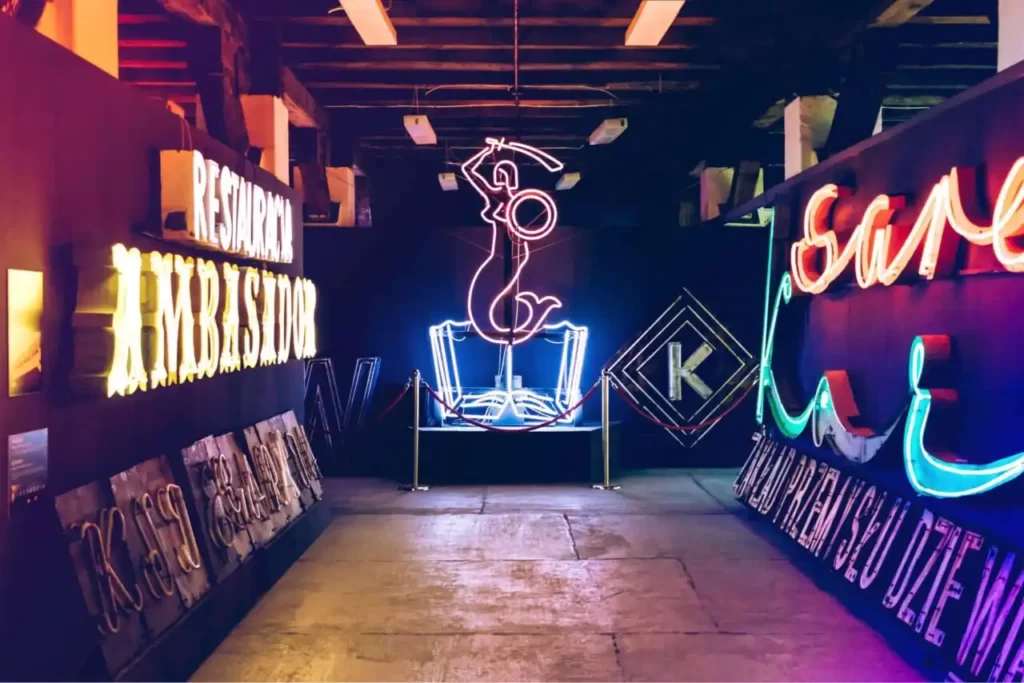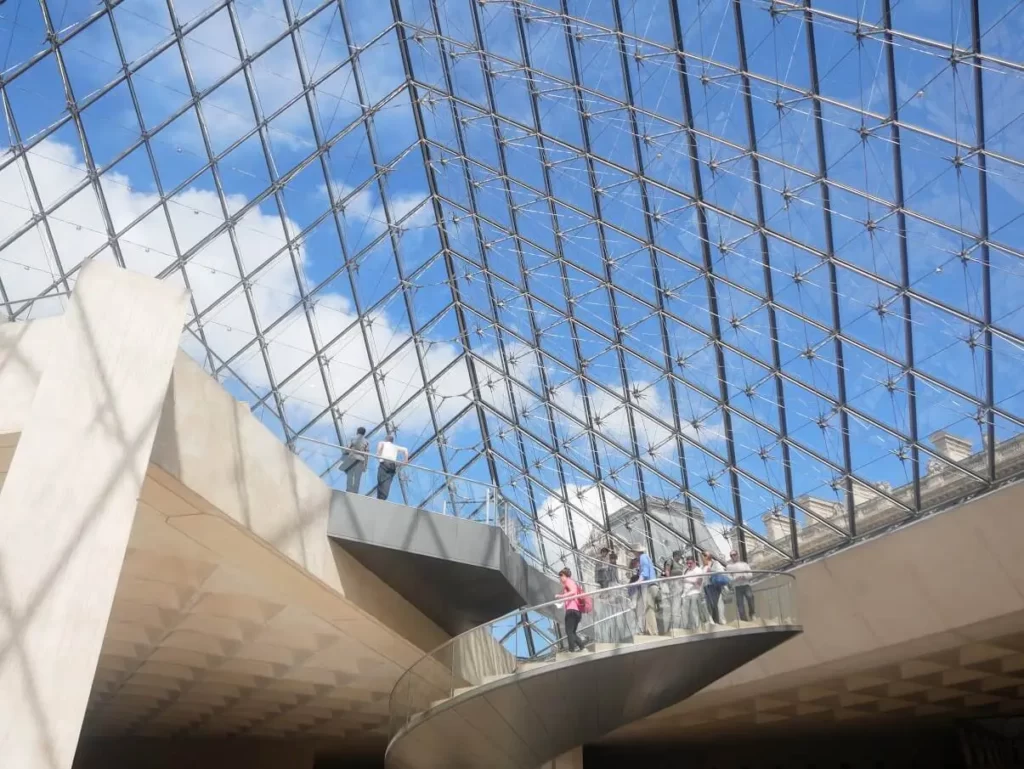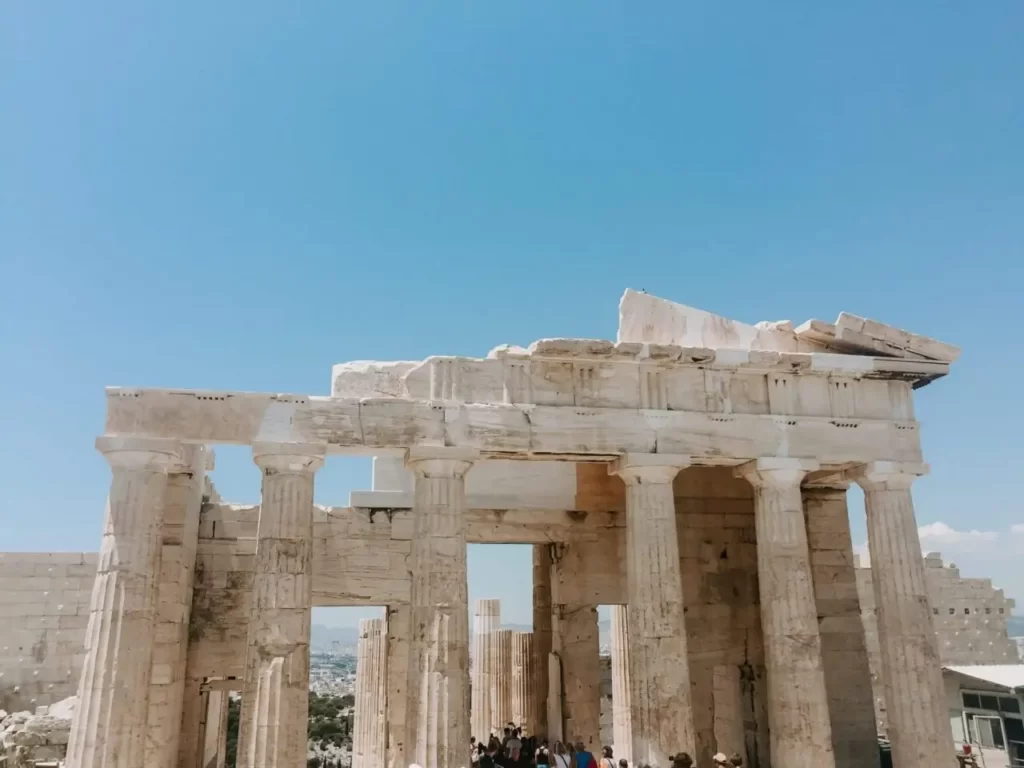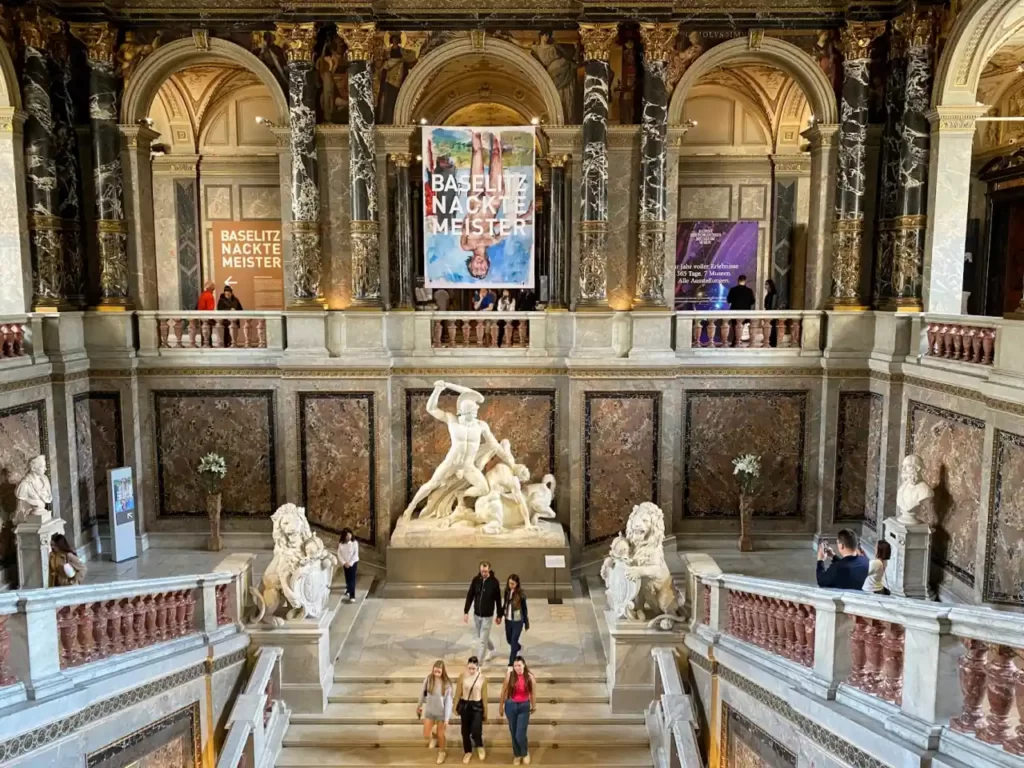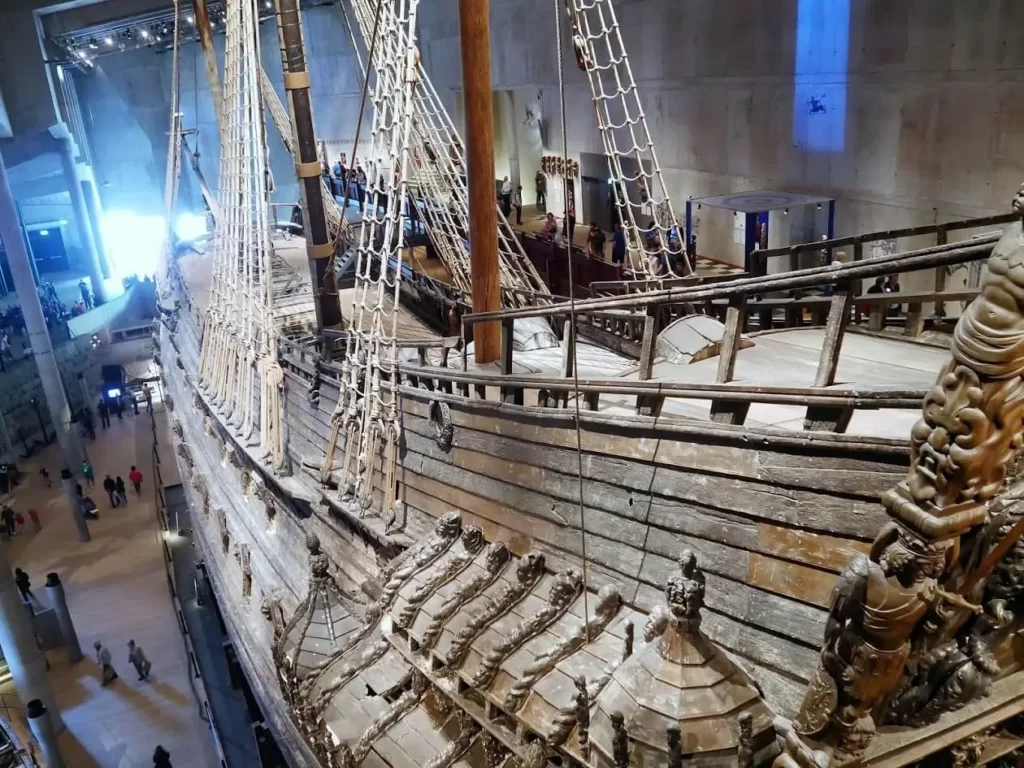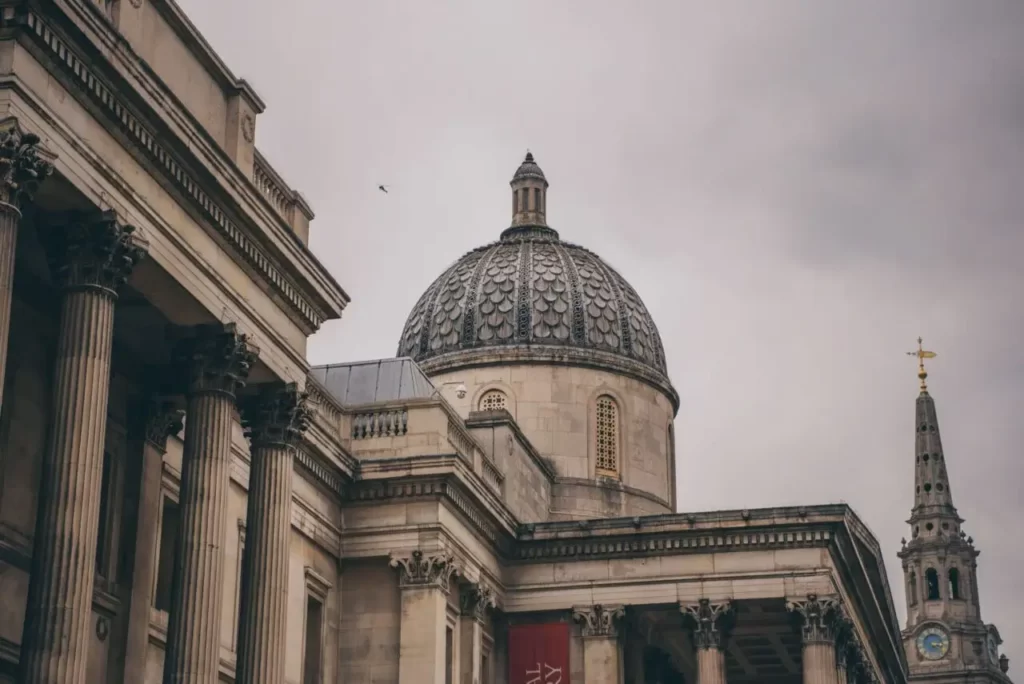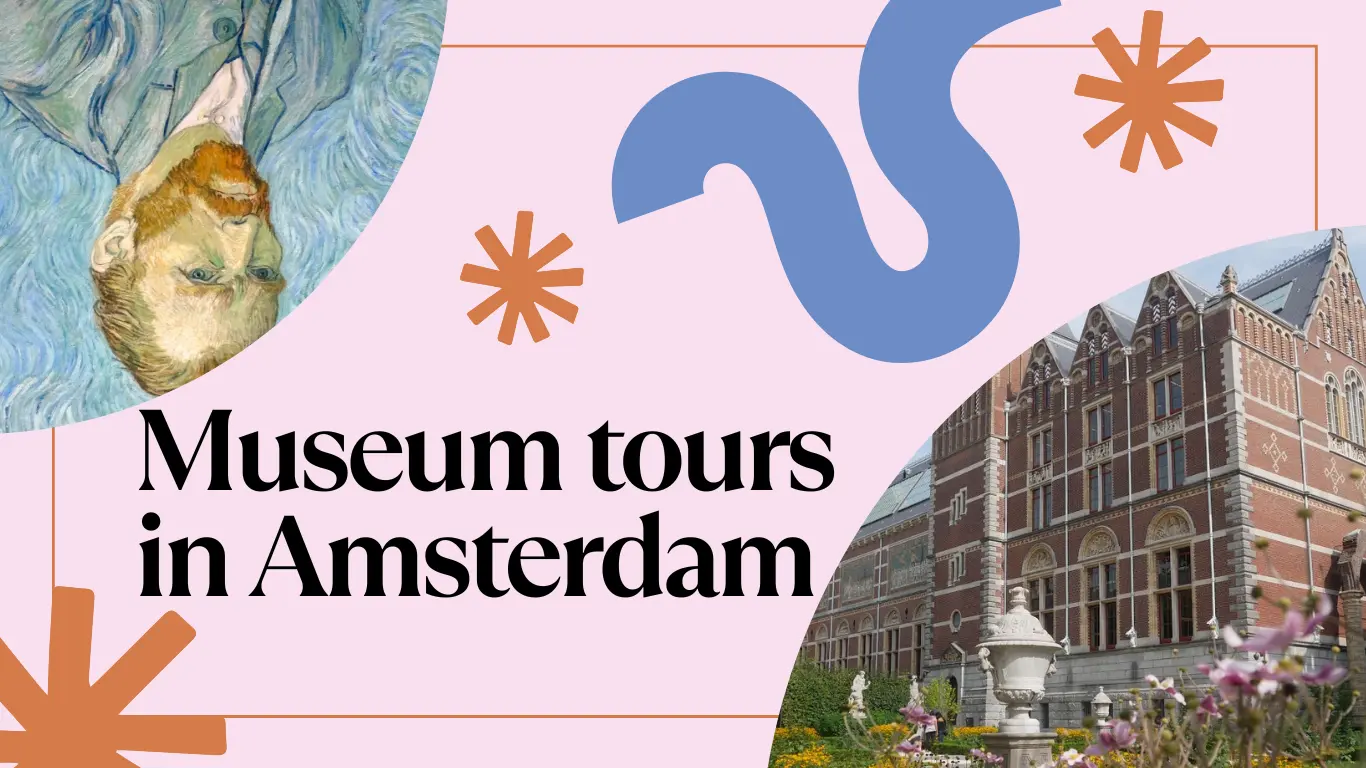The blog post 15 Best museums to visit in Europe was first published on Culture Tourist on 5 March 2019 and updated on 26 September 2025.
Are you looking for the best museums to visit in Europe in 2025? Visiting museums is a great way to learn about the local culture while travelling. However, sometimes, a motivation to travel for me is purely to see a particular museum. I’m often asked what are the best museums in Europe. Since it’s a tricky question, I’ve asked some of my fellow travel bloggers to help me compile the list of the 15 best European museums to visit in 2025.
Best museums in Europe to visit in 2025
1 – Rijksmuseum, Amsterdam
The Royal Museum of the Netherlands, or the Rijksmuseum, is home to some of the most famous Dutch Golden Age paintings. Rembrandt‘s The Night Watch and Vermeer’s Milkmaid are some of the best-known among them. Eight hundred years of Dutch art and history, with around 8,000 exhibits, are on display in the Rijksmuseum, making it one of the best museums in Europe to visit this year.
Its building, designed back in 1885, is a piece of art itself. You can easily spend a day only by admiring its wall paintings and statues on its façade. It’s also probably the only museum in the world with a road going through it.
Besides being one of the best museums in Europe, the Rijksmuseum is a child-friendly museum, and it’s lovely to visit the Rijksmuseum with a toddler (take a look at the self-guided tour on a link here).
If you’d like to learn more about it and check out some of the Rijksmuseum highlights, take a look at this video.
⤷ Read more: The Best Museums in Amsterdam
2 – Prado Museum, Madrid
A trip to Madrid would not be complete without visiting one of the city’s crowning glories, the Prado Museum. Dating back to 1819, this impressive art museum houses 8,600 paintings and more than 700 sculptures for you to admire.
The museum’s collections include Spanish, Italian, and Flemish masterpieces. Its Spanish collection is the largest one in the world. Among the different galleries, you can find Spanish paintings made between the 11th century and the 19th century. So, if you are a fan of Spanish artists like Goya, Velazquez, or El Greco, and you want to see some of their most famous works, you’ll love visiting the Prado.
The museum also hosts temporary exhibitions, the list of which you can see on the museum’s official website.
Since the Prado is such a large museum, take enough time and choose specific galleries to visit in advance. You can enter the museum for free from Monday to Saturday from 6 pm to 8 pm, and on Sunday from 5 pm to 7 pm. However, these times tend to get a lot more crowded, so take that under consideration when planning your visit. If you prefer buying your tickets, I recommend purchasing them in advance online.
/Or from My Path in the World/
3 – Uffizi Galleries, Florence
If you are an art lover, you must definitely place the Uffizi Galleries in Florence on your list of famous museums to visit in Europe. Visiting the Uffizi is considered one of the top things to do in Florence, even though the city is art heavy, attesting to the quality and renown of its collection. Located in the historic centre of Florence, the Uffizi is extremely popular, so advance reservations are advised if you do not plan on getting the Firenze Card.
The Uffizi houses Western art, both paintings and sculpture, from the Middle Ages to the Modern period. Its collection of the 14th century and Renaissance paintings is the star attraction. Among the masterpieces you will see here, are Sandro Botticelli’s Birth of Venus and La Primavera, Michelangelo’s Doni Tondo, Madonna of the Goldfinch by Raphael, Bacchus and Medusa by Caravaggio, and Venus of Urbino by Titian. Annunciation by Leonardo da Vinci is a must-see because it’s his first significant work, painted when he was only 20 years old.
Other than the paintings, the Uffizi houses several statues and busts that are old Roman copies of lost Greek works. They were collected by the Medici family, the de facto rulers of Florence.
/Dhara from It’s Not About the Miles/
⤷ Read more: 10 Cultural spots to visit in Florence
4 – Fondation Beyeler, Basel
Although there are so many fantastic museums in Basel, my favourite place there was, without a doubt, the Fondation Beyeler. It’s located outside the city, in the small town of Riehen, but easily reachable from the city centre of Basel by tram (you’ll need around 25 minutes to get there).
The museum is located in a building designed by Renzo Piano in 1997. The art collection was private by Hildy and Ernst Beyeler, who transferred ownership to the foundation in 1982. The museum could be seen in around two hours, making it a perfect place to introduce some of the top names in the modern art world. Among the authors of the works displayed are Degas, Monet, Cézanne, Van Gogh, Picasso, Rothko, Warhol etc.
Its beautiful architecture and fantastic art collection put Fondation Beyeler on the list of the best museums in Europe to visit in 2023.
⤷ Read more: Weekend in Basel filled with art and culture
5 – Neon Museum, Warsaw
Neon Museum is one of the best museums in Warsaw. It is also among the most unique museums in the world.
Located in Praga (the alternative and edgy part of Warsaw), in the former factory, the museum shows numerous neon signs that were part of the cityscape in Eastern Europe during the Cold War. Once the Soviet Union collapsed, the colourful signs fall into despair, forgotten by many. Fortunately, a group of enthusiasts has decided to save them, one after another.
Eventually, the museum was created, and currently, it’s one of the biggest tourist attractions in Warsaw. Not only you can see beautiful neon signs there, but also learn about their history and the technique they were made in. People behind the museum are involved even in restoring old neons that are more and more present in the streets of Warsaw.
/Kami from My Wanderlust/
⤷ Read more: 10 Best art exhibitions in European museums in autumn & winter 2025
6 – National Azulejo Museum, Lisbon
Portugal is famous for its ceramic tiles, and there is no better place to explore their history than at the National Azulejo Museum in Lisbon.
The museum’s location is slightly out of the way, so many tourists don’t make it here. But it’s a unique Lisbon experience that should not be missed.
The museum is housed inside the deconsecrated Madre de Deus Convent, which is an attraction itself. Inside the church, you can even see some azulejos in situ, as they were meant to be viewed, surrounded by lavish Baroque ornamentation. Some tiles are painted with intricate geometric patterns. In contrast, others are covered in elaborate scenes and are used to tell a story.
In addition to the usual Biblical scenes, there are also some unusual, humorous motifs. For example, there is a series from the 17th century called singerie that features monkeys dressed up as humans, and a chicken riding in a carriage on the way to her wedding.
The museum’s highlight is a huge panoramic panel made up of more than 1,300 tiles that depict Lisbon’s cityscape shortly before the 1755 earthquake that destroyed most of the city.
/Wendy from The Nomadic Vegan/
⤷ Read more: Most beautiful museum cafes in Europe
7 – Musée Louvre, Paris
The Louvre in Paris is, without a doubt, one of the best museums in Europe.
Well known as the home to Leonardo da Vinci’s Mona Lisa (watch my 3-minutes of art history video about that painting), it has one of the most significant art collections in the world. It is impossible to see it in a day, so planning your visit in advance is advisable. Open in 1793, it’s home to some 38,000 exhibits from Prehistory until the 21st century. Its collection of Renaissance art and Egyptian collection are the museums’s highlights.
Besides the Mona Lisa, some of the top-rated exhibits there are Fayum mummy portrait, Ghirlandaio’s Portrait of an old man and his grandson, Michelangelo’s Dying slave, Nike of Samothrace, some Napoleon’s portraits, etc.
It’s one of the most popular museums in Europe, so it’s good to plan your visit in advance. Choose the collections you’d like to see beforehand and purchase your entrance ticket online so you don’t need to queue for hours before entering the museum.
⤷ Read more: The best museums in Paris
8 – The Acropolis Museum, Athens
You can see the massive rock of the Acropolis from nearly everywhere in Athens. This UNESCO World Heritage Site has been the primary religious centre in Greece for over 3,000 years. Atop the Acropolis, the Parthenon devoted to the goddess Athena is one of the most recognised structures in the world. But it’s completely empty.
While the Parthenon is the largest Doric temple ever built in the ancient world, the valuables were considerably smaller and highly portable. Many artefacts were famously looted from the country, however many essential items remained. Those significant historical pieces related to Ancient Greece can now be seen in the beautiful Acropolis Museum at the base of the rock.
The Acropolis Museum is one of the best museums in Greece. Here, visitors can learn about Greece’s history and artefacts from over 3,000 years ago. The museum houses an extensive collection of exhibits, including bronze figurines, carved statues, painted vases, friezes, and scores of other items. The objects are meticulously well preserved and presented in their proper historical context.
Best of all, the Acropolis Museum offers specular views of the Acropolis itself!
/Lance & Laura Longwell from Travel Addicts/
9 – Kunsthistorisches Museum, Vienna
The Kunsthistorisches Museum in Vienna is unique because it was founded to highlight the Imperial collection of art gathered by the Habsburg family. In the second half of the 19th century, with the global changes in Europe, they wanted to make their art collection more accessible to the public.
The buildings were designed by Gottfried Semper and Baron Karl von Hasenauer and constructed between 1871 and 1891. The museum was opened in the same year by the Emperor Franz Joseph I.
The interior of the building is unique among the European museums. It’s lavishly decorated with murals, gold leaf and marble, while fantastic stucco decoration is on the galleries’ ceilings. While wandering around the Kunsthistorisches Museum in Vienna, you can feel it was built as a museum to host the Habsburg art collection.
The museum is home to one of the largest collections of paintings made by Pieter Bruegel the Elder, with The Peasant Wedding, Children’s Games and Hunters in the Snow being the most well-known.
Among the museum highlights are the Cellini Salt Cellar, Vermeer’s The Art of Painting, Rembrandt’s paintings, Parmigianino’s Self-portrait in a convex mirror, and many more. If in Vienna, be sure to visit one of the best European museums located there.
⤷ Read more: Kunsthistorisches Museum in Vienna Collection
10 – Vasa Museum, Stockholm
Stockholm is home to so many wonderful museums. However, the most famous and exciting one is, without a doubt, the Vasa Museum. It’s located at Djurgården, also known as the Museum Island, because many of Stockholm’s museums are there.
Vasa Museum is home to the 17th-century ship that sunken on its maiden voyage just in front of the shore of Stockholm. A huge Vasa ship is well preserved and a central piece of the museum today. You can see it from close, look at the material it was made of and see some beautiful decoration on it, too.
⤷ Read more: My travel diary: Four days in Stockholm
11 – Picasso Museum, Barcelona
Most of us know Picasso for his abstract Cubism artworks, where he shatters two-dimensional perspective.
Visiting Picasso Museum in Barcelona provides a better understanding of his art and his progression. This museum displays his work on a timeline, allowing you to follow his works from the more traditional ones of his early years to the very iconic paintings and sculptures from the end of his career. Make sure you dedicate plenty of time to visit.
Picasso lived during his crucial years in Barcelona – those of his apprenticeship as an artist. He established and maintained strong links to the city throughout his life, and it was here where he wanted his museum to be.
The museum is housed in the Gothic quarter of Barcelona in a 13th-century palace – Palau Aguilar, that belonged to the Aguilar family. The central courtyard has an open-air stairway, pointed arch gallery and Gothic sculptures that date from the 15th century. It looks more like a palace than a museum.
/Priya from Outside Suburbia/
⤷ Read more: My travel diary – Three days in Barcelona
12 – National Gallery, London
The National Gallery is one of London’s many free museums and certainly one of its best. Perched atop Trafalgar Square, the building alone is pretty impressive – but that’s nothing compared to what you will find inside.
There’s a reason that this is the fourth most-visited art gallery in the world. The collection spans the history of Western art – with pieces on display from every significant art movement since the 1300s.
It’s weird to think that unlike many other European galleries, which were formed much earlier, The National Gallery didn’t come into existence until the 19th century. When the government reluctantly purchased the collection of 38 artworks previously owned by the late John Julius Angerstein. Once it was established, it grew quickly and now boasts a collection of over 2,300 pieces – a collection that gets bigger each year.
I’d recommend setting aside at least half a day to explore the gallery, a full day if you can. But you really shouldn’t miss some of its star displays – including Titian’s Bacchus and Ariadne, Rembrandt’s Self Portrait at the Age of 34, Cezanne’s Bathers (Les Grandes Baigneuses) and Van Gogh’s Sunflowers – the list could go on. Don’t forget to wear some very comfortable shoes.
/Julianna Barnaby from The Discoveries Of./
⤷ Read more: The Best Museums in London
13 – DDR, Berlin
During our four days in Berlin, one of our favourite places to visit was the interactive DDR Museum. This is a fantastic place for visitors to learn what life was like, living in former East Germany under the German Democratic Republic. This place is so interactive for everyone that it’s perfect for singles, couples and families alike looking for fun things to do in Berlin while learning about its history at the same time.
Across 27 themed areas, visitors are encouraged to touch, feel and interact with all the items on display to reach an understanding of the past. You will find everyday items from when the Berlin Wall was still standing, get to walk through an authentically furnished DDR flat, and learn about the Stasi surveillance techniques as well as the history of East Germany.
The DDR Museum is one of the must-see Berlin Museums, allow at least a few hours to explore it all.
/Melissa from Thrifty Family Travels/
14 – The Vatican Museums
In the heart of Rome, the Vatican Museums hold one of the biggest and most important collections of art and antiquities in the world. The museums were founded by Pope Julius II in the early 16th century and continued to grow under successive popes. Today the collection totals over 70,000 items including Ancient Roman statues and Renaissance masterpieces, though only 20,000 are currently on display.
Michelangelo’s Sistine Chapel is the centrepiece and one of 54 galleries in the Vatican Museums complex. The frescoes depicting scenes from the Bible’s Book of Genesis are some of the best-known paintings in the world. Other highlights of the museums include
- The Raphael Rooms – four rooms of frescoes depicting biblical and historical scenes by Renaissance master Raphael
- Gallery of Maps – 120 metres of exquisitely painted topographical maps of Italy
- Sala Rotonda – a smaller scale version of the Pantheon that houses colossal ancient statues and mosaics dating from the Roman Empire
- The Bramante spiral staircase designed by Giuseppe Momo
Visiting the Vatican Museums is a highlight of any trip to Rome. Most people spend three hours exploring the galleries, but even then you really only scratch the surface of this immense and magnificent collection.
/Katy from Untold Morsels/
⤷ Read more: What to see in Vatican City
15 – Musée Orsay, Paris
Located in a former train station in the heart of Paris, Musée Orsay was founded in 1986. It soon became one of the best museums of modern art. It’s also home to one of the most fantastic Impressionist paintings collections. Other famous art pieces there are Edouard Manet’s The Luncheon on the Grass and the extensive collection of paintings by Vincent van Gogh and Paul Gauguin.
It’s also where one of the most famous photo spots in Paris is. On the museum’s top floor, you’ll find a massive watch through which you can enjoy a beautiful view of Montmartre Hill and the Sacré Cœur Church on top of it.
⤷ Read more: The most intriguing art heists in European museums
There are, of course, many more amazing museums in Europe you have to visit. However, these are definitely among the best museums in Europe. Are you planning see any of them this year?
Would you like to join some of my museum tours while in Amsterdam? Follow this link to read more about them.
Thanks to all the lovely bloggers who participated in creating this blog post.

